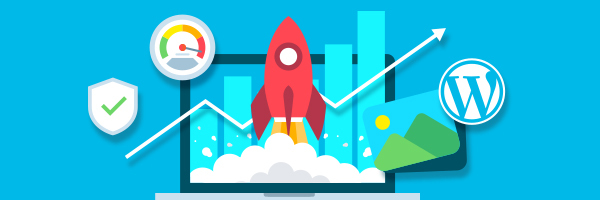Slow loading times and overall site performance can be detrimental for your overall website user experience. When web visitors land on a website that takes longer than expected to load, they are very likely to get impatient and leave your site, or at least have a negative first impression before they’ve even started exploring your site.
In this article, we’ll dive into 6 techniques that we implement for our clients, which can help you improve your website’s overall speed and performance.
1. Videos
Videos are a great way to make your website more interactive and can help show off more of your personality. But they can take up a lot of storage space, which can result in a slower site load speed.
It’s best to host your videos on a third-party platform such as YouTube or Vimeo and then embed them onto your website. Most video hosting platforms can generate HTML code for your video, which can then be easily embedded on a web page. This way, visitors can watch your video directly on your website, without compromising site speed or performance.
2. Lazy loading
Lazy loading can be used to improve your site’s performance by delaying the loading of lower-priority resources like images and videos located below the fold of your site. Placeholders will be used initially, and then fully loaded versions of the content will appear as the user scrolls.
Loading fewer items upon landing on a website will result in a faster user experience and will reduce the amount of bandwidth needed to load the page (a benefit for users with slower or limited internet connections).
3. Themes & Plugins
Most websites are created using a theme and can use dozens of plugins. Be cautious about which WordPress themes and plugins you choose, since not all are created with speed, performance, and security in mind. WordPress is an open-source CMS which means that there are a massive number of themes and plugins coded by both professionals and amateurs to choose from and not all are well-maintained.
A poorly built theme or plugin can cause a number of issues and potentially have a negative effect on your site’s performance and security. It’s important to work with a development team that can help sift through the options and check user reviews to find the best fits for your website.
Additionally, an excess of plugins on your site can be problematic. It’s best to be efficient with your plugin usage and remove any unused plugins to save on storage space.
4. Image Optimization
The most commonly used image types on websites are JPS or PNGs. However, these file types can contribute to slower site speeds due to their large file size.
Instead, we recommend serving the images on your website as WebP files. WebP images can be up to 35% smaller than JPGs or PNGs and use up less bandwidth.
The process of uploading an image to your website won’t change. Instead, a developer can configure a plugin on your website to automatically convert a JPG or PNG to the WebP format.
5. Website Server
There are a lot of web server options on the market, but not all are optimized specifically for WordPress sites, and most may not be able to offer the level of support or performance you need with a custom site.
At TinyFrog, we host all of our websites with WPEngine, a hosting company dedicated specifically to WordPress sites. WPEngine’s high-performance servers have robust features that can help improve your website’s performance.
When looking for a web host, here are a few site details about your website to consider:
- How many monthly visitors will your website have? Choosing the right hosting for high-traffic websites is very important.
- What type of functionality does your website include, such as a large blog, member portal or an ecommerce store?
- Does your website have a large number of webpages and media files?
6. Set up Browser Caching
Browser caching is another great trick to try to improve your site’s performance. When caching rules are set up, various file types on your website can be stored locally on the site visitor’s device. If they visit your site again in the future, the browser will pull from those local files first instead of calling back to the server.
Fewer server calls typically mean quicker load times as it reduces network and server traffic.
Conclusion
Once your website has been designed and developed, it still requires ongoing WordPress maintenance. When making any changes to your website, be sure to check your site’s performance after implementation to confirm that everything works properly and quickly.
If you have any concerns about your current website’s speed or performance, reach out to our team for a complimentary site review!



